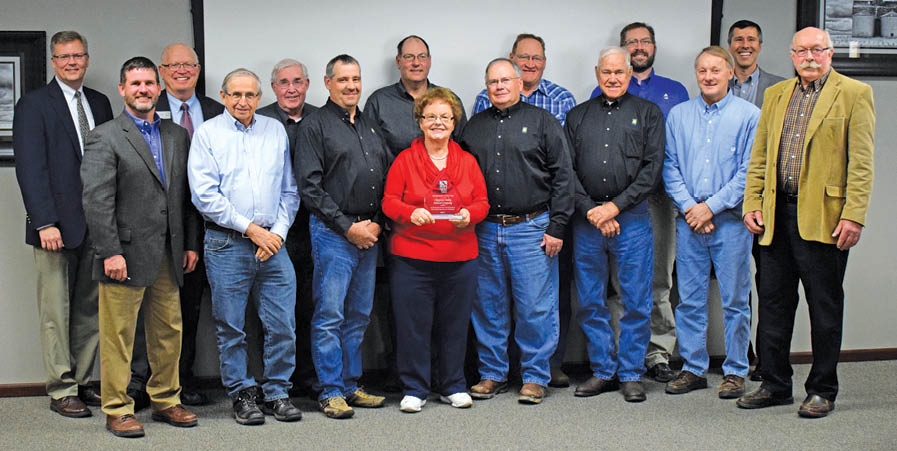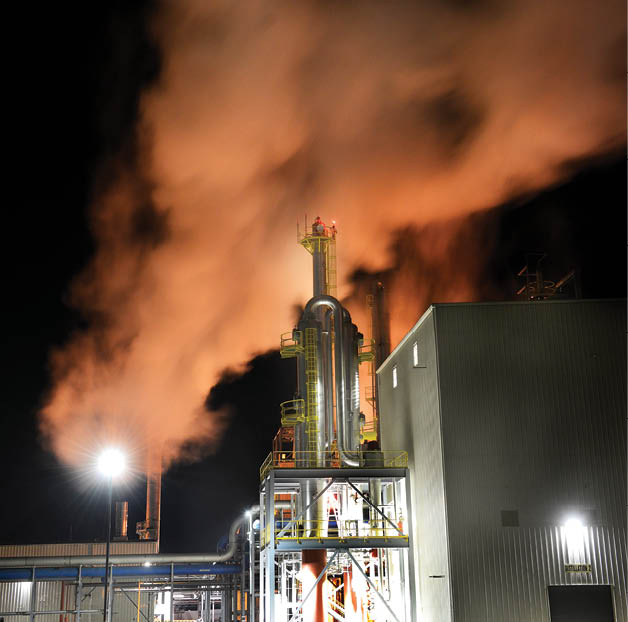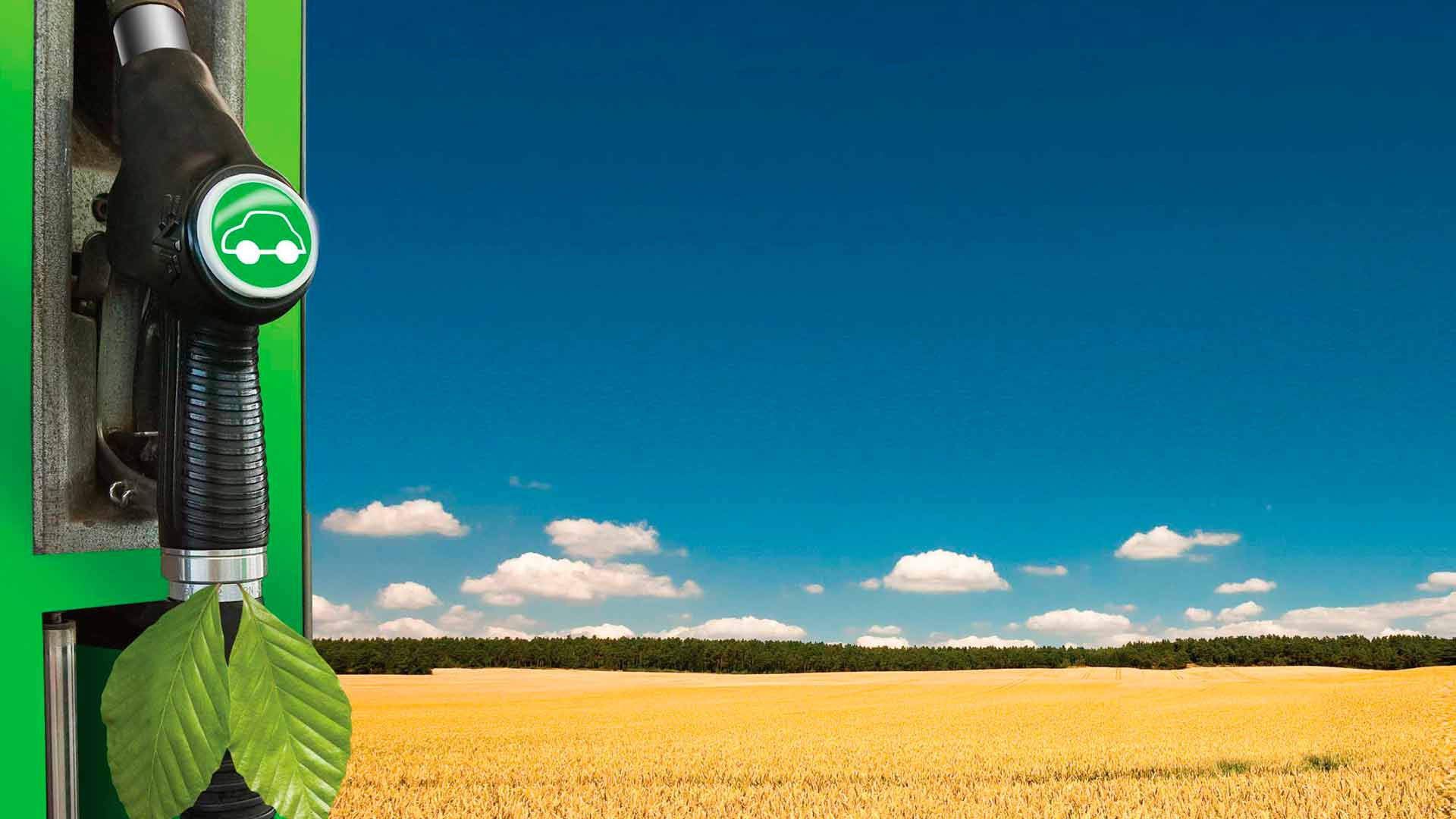BY DAN LEMKE
 Founders of the Chippewa Valley Ethanol Company (CVEC) in Benson were among the first to ride Minnesota’s growing ethanol wave. CVEC formed in 1995 and began processing corn into ethanol in 1996, becoming just the fifth enterprise in a state that now boasts 21 corn ethanol plants.
Founders of the Chippewa Valley Ethanol Company (CVEC) in Benson were among the first to ride Minnesota’s growing ethanol wave. CVEC formed in 1995 and began processing corn into ethanol in 1996, becoming just the fifth enterprise in a state that now boasts 21 corn ethanol plants.
CVEC’s Benson facility has the capacity to produce 50 million gallons of ethanol annually. The plant consumes over 17 million bushels of corn each year and has 975 cooperative owners. Although ethanol and coproducts like dried distiller’s grains (DDGS) were the first materials produced at the plant, CVEC has a more than 20-year track record of looking for new and innovative ways to get the most from the corn they process.
“It goes back to the initial culture when CVEC was founded,” says General Manager Chad Friese. “We were one of the first ethanol plants, but we’ve always been willing to build on our diversity and take a look at other things. We’ve done a lot to try to add value for our producers.” Those efforts include looking beyond their own facility.
CVEC is a founding member and part owner of Renewable Products Marketing Group (RPMG). Headquartered in Shakopee, Minnesota, RPMG markets about 1.3 billion gallons of ethanol and 1.5 million tons of distiller’s grains annually. In addition to operating their own ethanol plant, CVEC also has ownership stake in ethanol plants in Janesville, Minnesota, Lima, Ohio and Hankinson, North Dakota. Additionally, CVEC retains minority ownership in Frontline BioEnergy, a gasification technology company headquartered in Ames, Iowa.
Diversity Reigns
Friese says that since the coop’s early days, CVEC has placed a high value on innovation.
“We’ve never said, ‘we’ve always done it like this,’” Friese says. “Times are always changing. We have to be able to change with them.”
As with most ethanol plants, fuel ethanol and DDGS for feed are the primary economic drivers for CVEC. Corn oil produced at the plant is used as a feedstock for biodiesel and other industrial applications.
“Fuel and feed are the big drivers, but through diversity we’ve found other niches,” Friese says.
In addition to producing 50 million gallons of ethanol each year, CVEC’s diverse business enterprise includes Glacial Grain Spirits (GGS), which manufactures industrial, food-grade ethyl alcohol and beverage spirits.
Established in 1998, GGS is one of the only farmer-owned industrial and beverage alcohol product manufacturers in the United States. The alcohol GGS produces is used in many household products including hand sanitizers and cleaners as well as antibiotics, vitamins and vaccines.
Glacial Grain Spirits is both kosher and organic certified. Because they follow rigorous standards, GGS is able to market to some high-end cosmetic companies.
CVEC has also entered the market for human consumption products. Prairie Spirits is a subsidiary of Glacial Grain Spirits and manufactures organic alcohol products.
Prairie Spirits items meet or exceed the purity standards for traditional ethyl alcohol used in industrial, food, beverage, or pharmaceutical applications.
Glacial Grain Spirits also produces its own product line called Prairie Organic Vodka. GGS buys the grains used for Prairie Spirits from local organic growers. The grains are shipped directly from the farm to the GGS manufacturing facility for processing.
Recognized for Innovation
Because of their innovative spirit and value-added diversification, CVEC was selected as AURI’s 2017 Ag Innovator of the Year. The award annually recognizes a Minnesota company that has achieved commercial success and adds value to the state’s agricultural commodities.
“From their inception, CVEC has been a recognized leader in the industry,” says Michael Sparby, AURI senior project strategist. “They’re not only producing ethanol, they’re willing to look at what else is out there and then engage in those opportunities.”
Sparby says AURI has worked with CVEC on a variety of projects over the years. He adds that in addition to their own ideas, CVEC staff has been willing to listen to ideas from other entrepreneurial businesses.
“For AURI, they’re a great partner. We’re able to bounce ideas off of them. If there’s potential, they will explore it further,” Sparby says. “They’ve been a great resource from that perspective.”
“It’s part of our culture to be constantly looking forward,” Friese contends. “If we’re closed off to other ideas, we
might eliminate a lot of opportunities.”
Friese says working with resources like AURI and the University of Minnesota-Morris to evaluate new technologies has been a big help for the company.
Learning Process
 Being on the leading, innovative edge of the industry means there are both hits and misses. Over the course of two decades, not every idea CVEC has tried worked out according to plan.
Being on the leading, innovative edge of the industry means there are both hits and misses. Over the course of two decades, not every idea CVEC has tried worked out according to plan.
Several years ago, CVEC installed a gasification system to convert biomass materials like corn stover, wood or corn cobs into syngas. This gas could then be burned as an alternative fuel, reducing the ethanol plant’s natural gas requirements. The system worked well, but the discovery of the hydrofracking process to extract natural gas from shale
caused a shift in the landscape. Natural gas supplies were more widely available, and the price dropped.
“The gasifier was a great project, but we didn’t know that the price of gas would go way down, so the payback hasn’t been there,” Friese admits. “It’s a great technology, but the economics changed and operating the gasifier became uneconomical.”
Friese says the company knows not every innovation is going to be a success, but that doesn’t discourage them from continuing to look for new opportunities to add value to agricultural products or to be more efficient in how they operate.
“We have tried to take a cautious approach to new ideas,” Friese says. “We have engineers who are constantly evaluating new technology to see what it could mean for us. These technologies may work for us at some point in time because we don’t know what the future will look like.”
Some of the technologies CVEC has evaluated helps them to process corn more efficiently. All ethanol plants are required to thermally sterilize the air their process emits so no organic compounds are discharged. The process means heating air to 1200 degrees Fahrenheit. CVEC identified and has installed a system that helps them recover some of that heat to be used elsewhere in their manufacturing process.
“We’ve had a lot of focus on energy efficiency. We strive to produce more with less,” Friese says.
Whether innovations lead to the identification of new revenue streams or ways to produce ethanol and other products more efficiently, Friese says CVEC’s primary goal is to benefit their farmer-owners and the rural communities in which they live.
“We are trying to return value to the rural economy,” Friese says. “The best ways to do that is to be effective. If we are doing well and staying relevant, then our goal is being fulfilled.
Innovation is Who They Are
2017 marks the 15th year that AURI has recognized the importance of agricultural innovations in Minnesota. AURI first presented the Ag Innovator of the Year award in 2002. The Ag Innovator of the Year is given by the AURI board of directors to a Minnesota company and AURI client that has shown innovation in the development of an ag-based product or process and has utilized AURI resources. This recognition highlights the accomplishments of one deserving business, but is also intended to draw attention to value-added agriculture’s overall contributions to the state.
“There are many great ideas generated across Minnesota and it is important to highlight an innovation each year to recognize the ingenuity as well as illustrate to others that turning ideas into reality is possible,” says AURI Executive Director Shannon Schlecht.
Ag Innovator award recipients are AURI clients and must use agricultural commodities to be considered. They must have created a unique or disruptive use, have been successful or are on the verge of greater utilization of Minnesota agricultural commodities in a higher value product that is manufactured locally.
Chippewa Valley Ethanol Company (CVEC) in Benson, Minnesota, was selected as the 2017 Ag Innovator of the Year because of their focus on adding value through diversification.

“Innovation is who they are,” Sparby says. “They embody the cooperative spirit in how they operate and how they approach their business.”
CVEC General Manager Chad Friese appreciates the recognition for the company’s innovative efforts. “Receiving this award means a lot,” Friese says. “It’s an honor to be recognized for our innovation and our forward thinking.”
Schlecht says that any value that can be added in Minnesota helps to utilize local production, create jobs and advance the state and regional economy. Many AURI agricultural innovation projects are in rural areas, which positively impacts small towns and farming communities.
An AURI survey of about half of AURI’s agricultural innovation projects conducted between 2010 and 2016 illustrates that value added agricultural innovations contributed nearly $77 million in additional annual sales, $90 million in capital investment over the six year period, usage of an additional 324,000 tons of agricultural commodities each year and also helped create or retain over 600 jobs across Minnesota during that time period.
CVEC entered the market for human consumption products in 1998 and in recent years launched Prairie Spirits, which uses grains from local growers for products like Prairie Organic Vodka. Prairie Spirits produces some of the finest products, which exceed the purity standards for traditional ethyl alcohol used in food and beverages.
